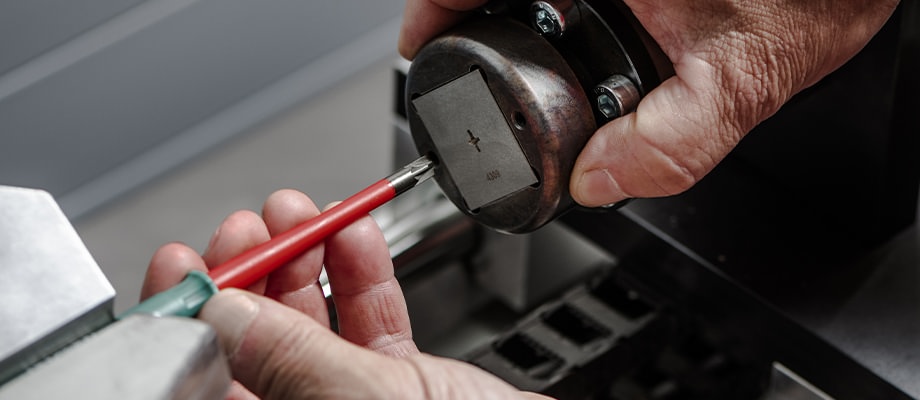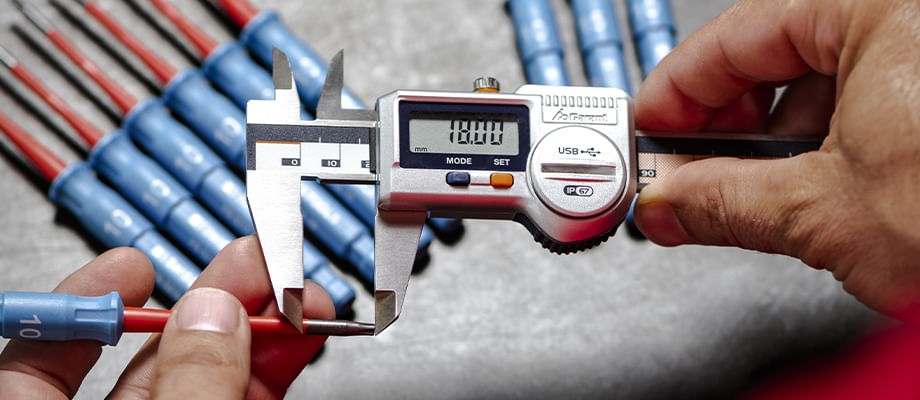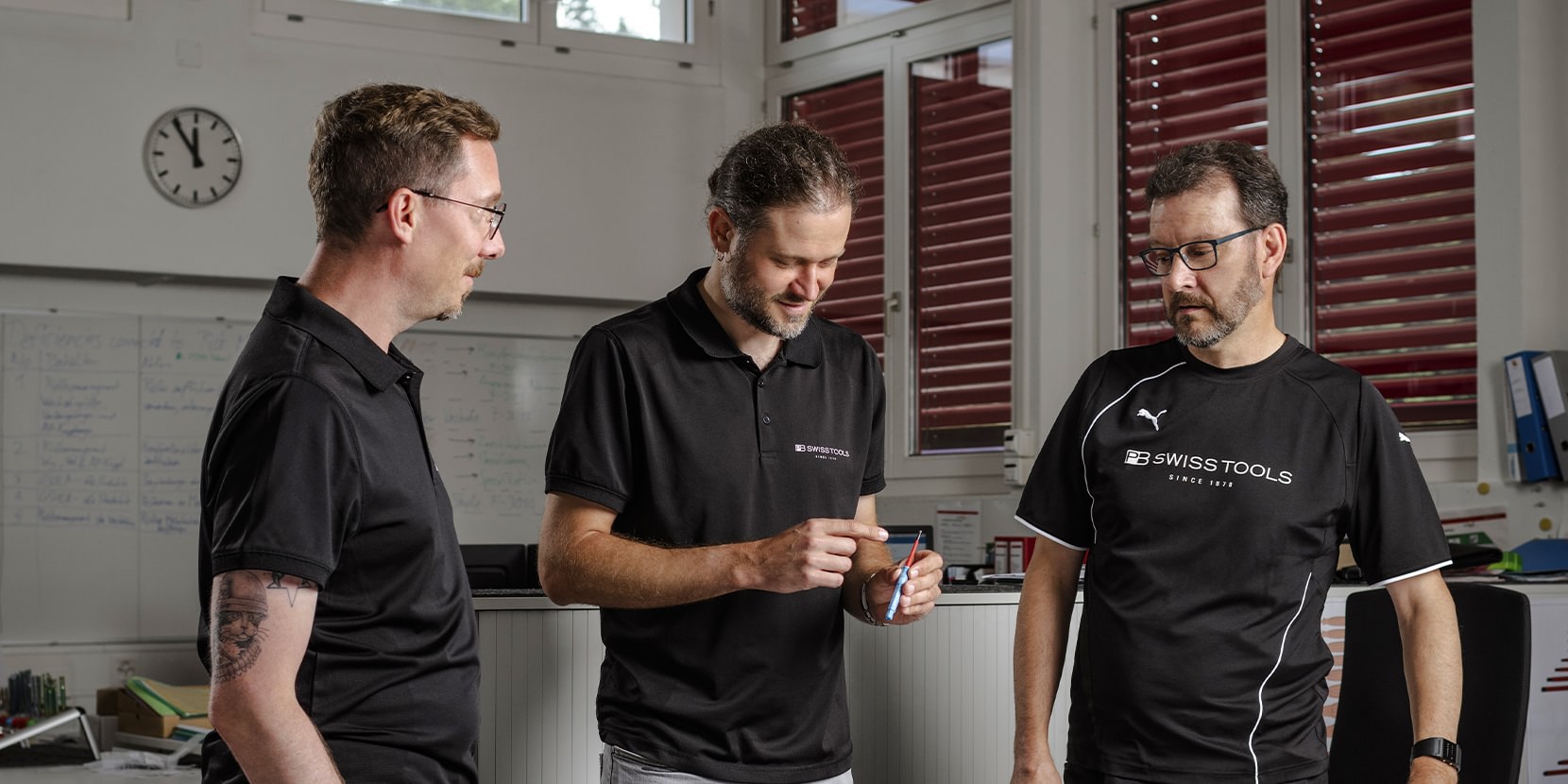
Better safe than sorry
When working on live parts, safety is without doubt the most important prerequisite. This applies for the tools as well.
In order to reduce the risk of an accident as far as possible, our tools have to pass nine important tests to meet the demanding standard of the VDE (Association for Electrical, Electronic & Information Technologies). If we discover a flaw, the tool or the entire series is scrapped. The tool with VDE label only reaches your workplace after it has passed all of the tests.
We differentiate between random sample testing and routine testing. During the latter, every single item is 100% tested for errors. We would like to present some of these tests here. Because you can rely on our tools – without fail.
100% insulated
Electrical insulation is essential when working with electricity. This is why we test every single one of our VDE tools in a special water quench through which a 10 kV current flows. The current is conducted to the tool’s insulation for 10 seconds in the water quench. It may not be electrically penetrated. We also prolong this test to three minutes during random sample testing.
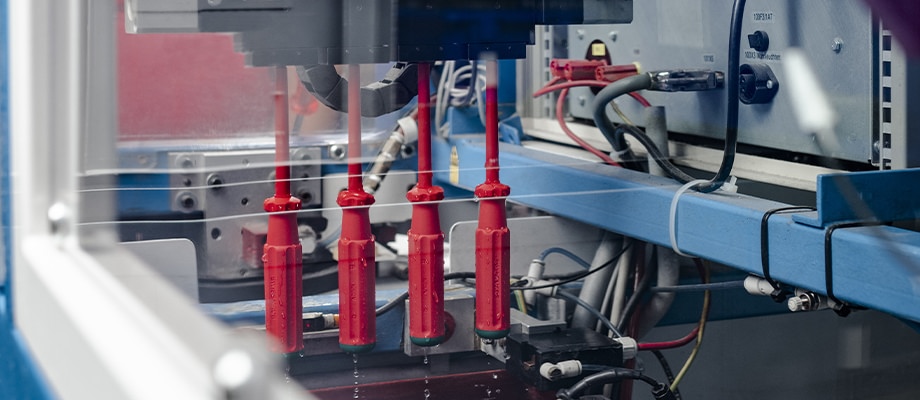
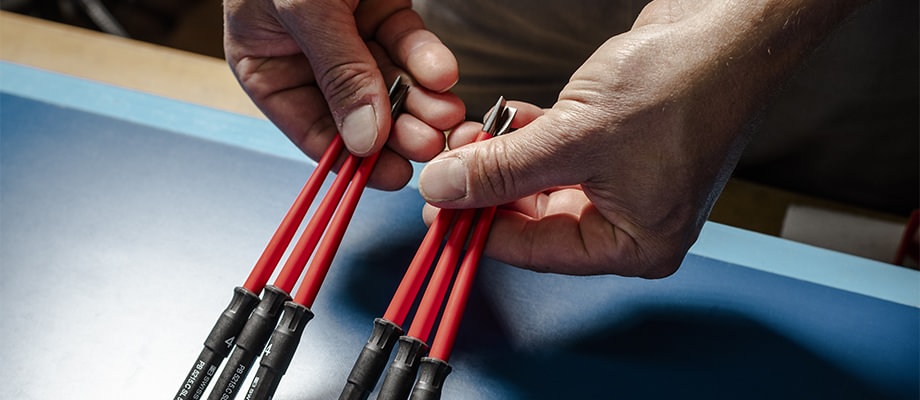
Visual check
Every PB Swiss Tools VDE tool undergoes a visual check. A qualified specialist hereby checks the insulation and handles in particular. Labels must be legible and include the designation of origin as well as the year the model was released. By the way, we perform a different test to ensure the labels last a long time.
Unyielding
High torques may occur when working with a screwdriver. The tip of the tool in particular has to withstand these torques. We test this in a special device. The tool is clamped in this and subjected to high stresses. The test is deemed to have been passed if the mechanical requirements of the corresponding ISO standards are met.
